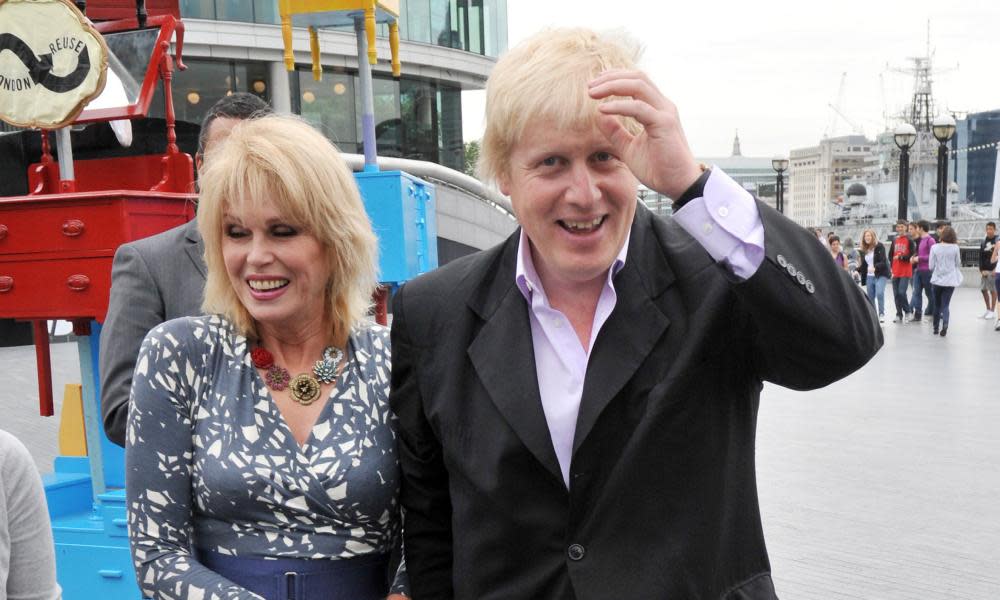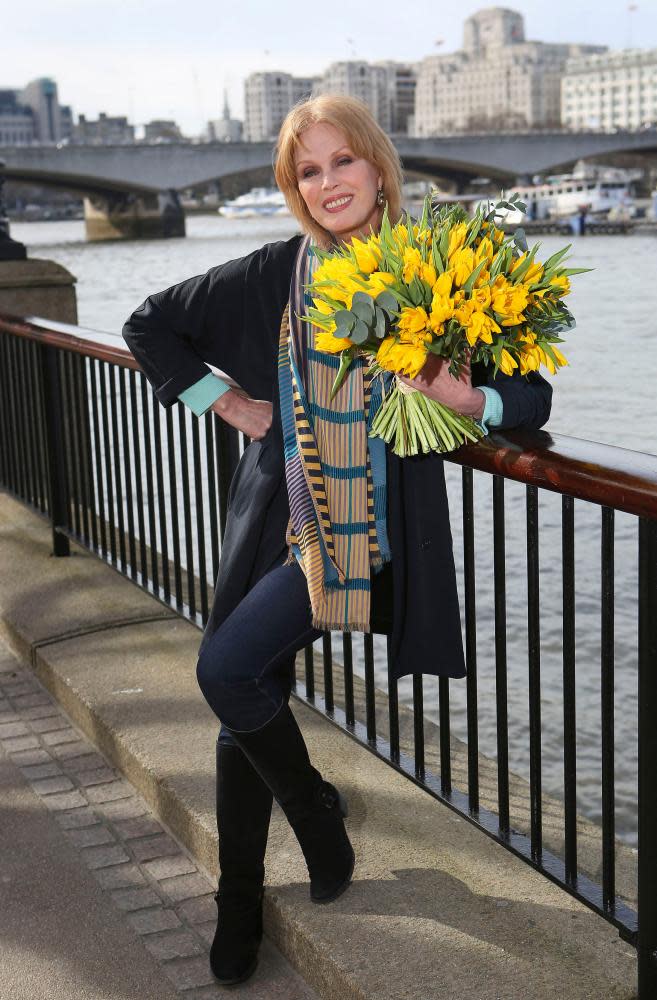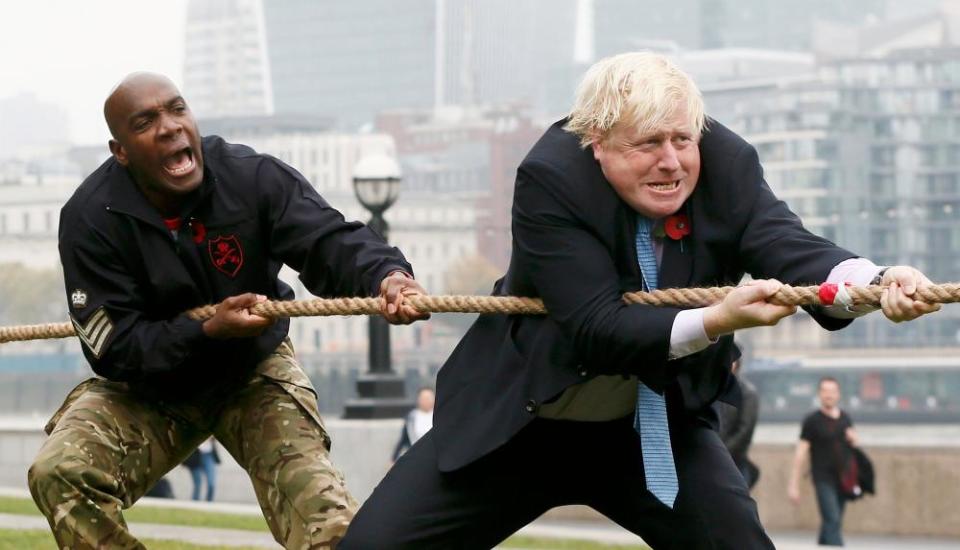'You pay for it, chum': Johnson's struggle to save his garden bridge

It was promised as a “tiara on the head of our fabulous city” and “a gift to the people of London” that would be entirely paid for by big business and rich benefactors, but Boris Johnson’s plan for a garden bridge across the Thames cost taxpayers £43m even though the scheme was scrapped long before a single flower would ever bloom.
The then mayor of London’s desperation to secure funding to meet the spiralling costs of the 366-metre (1,200ft) crossing led him to make a secretive dash to Silicon Valley to beg Apple executives for cash, offering to allow the iPhone maker to “call it the Apple Bridge and you pay for it, chum”.
Freedom of information (FoI) requests also reveal Johnson, who was twice warned over a “lack of transparency” in signing sponsorship deals with Barclays, Emirates and Wonga, sought to keep secret an attempt to get one of Britain’s richest families to fund the bridge while London was in crisis following the brutal murder of Lee Rigby.

Johnson met Barnaby and Merlin Swire, the chairman and chief executive of the family-owned conglomerate Swire Group, to discuss “possible opportunities including the garden bridge project” on 23 May 2013 – the day after the soldier was murdered outside the Royal Artillery Barracks in Woolwich, south-east London.
Johnson omitted the meeting with the Swires, the UK’s 27th richest family with an estimated £5bn fortune, from his official diary until May 2016. The publication of his diary, under FoI rules, showed Johnson squeezed in the meeting with Barnaby Swire, a contemporary of his at Eton, between an emergency Cobra meeting and two trips to the scene of the attack.

Johnson swung behind the garden bridge project after Joanna Lumley, the Absolutely Fabulous actor and a friend, sent a handwritten note wishing him “a thousand congratulations” on his re-election for a second term as mayor in 2012, and asked him to support her vision for a “green pedestrian bridge” that would bring “great loveliness” to the Thames. “Please say yes,” she said in the letter to Johnson, which was released following an FoI request from the Architects’ Journal, which has uncovered much of the saga surrounding the garden bridge procurement process.
The letter also revealed Lumley had already discussed her plan with Thomas Heatherwick, who was later named the official designer of the bridge. A series of FoIs revealed Heatherwick was present at Johnson’s fundraising meeting with Apple executives in 2013 – days before a Transport for London (TfL) competition to select the bridge’s designer, which Heatherwick won.
Johnson’s taxpayer-funded £4,106 flight to Silicon Valley in January 2013 to offer Apple naming rights to the bridge was made almost two years before planning permission was granted in December 2014.
An inquiry by the Labour MP Margaret Hodge into the bridge project found the tendering process was “not open, fair or competitive”. She said: “The only thing that was clear to me from the evidence provided was that building the garden bridge was a top and urgent priority for the then mayor. [And] decisions on the garden bridge were driven by electoral cycles rather than value for money.”
City Hall’s budget and performance committee had earlier raised concerns about sponsorship deals the mayor had signed with Barclays bank to fund a cycle-hire scheme, Emirates airline for a cable car, and the payday lender Wonga to sponsor free travel on New Year’s Eve 2010.
The real Boris Johnson
Over the course of the week, the Guardian is publishing a series of news reports, features and multimedia components on the man widely expected to be the next Conservative leader – and therefore prime minister. In coverage that ranges from his early days as a journalist to his last senior job as foreign secretary, we will seek to shed light on the exploits, ambitions and values of one of the most consequential – and most divisive – politicians of the age.
The 2012 report Whose Brand Is It Anyway? warned of “a lack of transparency about the costs and revenues of sponsored projects and how this compares to the estimates TfL made at the project approval stage … The lack of openness is also fuelling speculation and resulting in an increase in the concerns about TfL’s ability to get the best deal for its sponsorship opportunities.”
Johnson claimed the cost of flights and hotel for his trip to San Francisco on expenses, but did not declare that the trip was to see Apple or to raise funds for the garden bridge. The full details of the Apple fundraising drive were revealed by Sir Edward Lister under questioning from Hodge about the garden bridge procurement.
“The mayor felt there was a fair chance that Apple might actually sponsor the whole bridge … So we jumped on a plane,” Lister said. “We were only there for 24 hours and flew back again. We went there, we talked through it all … It was: ‘We do this, we call it the Apple Bridge and you pay for it, chum.’ It was a real sales operation to try and sell it.”

Lister said the attempt had failed because Apple had wanted to include a store on the bridge. That would not have fitted with Johnson and Lumley’s pledge that the bridge would be a public space.
Johnson refused to give evidence to Hodge’s review of the bridge project, telling her: “I am afraid any interview would not be the best use of my time.” But he added: “I remain a fervent believer in the garden bridge.” He was the only person who refused to give evidence to the inquiry.
By the time the current mayor, Sadiq Khan, pulled the plug on the bridge project in April 2017, its projected cost had risen to £200m, up from the original estimate of £60m – which Johnson had promised would be funded entirely by private donations.

 Yahoo News
Yahoo News 
